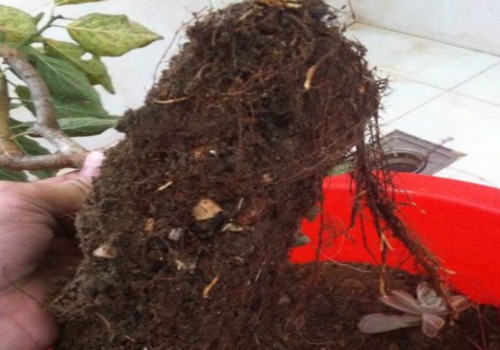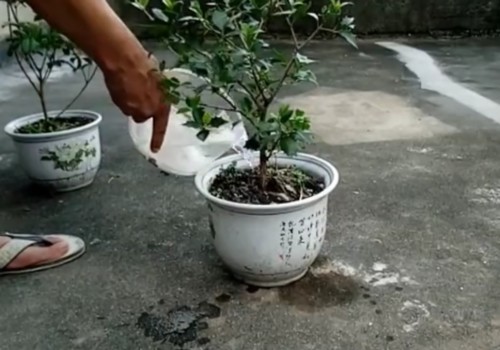How to maintain the bonsai of Pearl Plum
Pearl plum is a sunny tree species, which has the characteristics of shade tolerance, cold tolerance, drought tolerance and moisture tolerance. Based on the characteristics of these habits, it is not difficult to imagine that this plant is very easy to feed. In addition, its leaves are feathered, both strange and exquisite, is an evergreen shrub, usually can be planted as a potted plant, and even can be made into bonsai appreciation, the ornamental effect is very good.

Pearl plum growing in the wild is generally seen in cold places, if we are lucky enough to get the old pile and make it into a bonsai masterpiece, the ornamental value is very high, and the artistic effect is also very good. The most important thing is that this kind of tree is very easy to take care of, so how to maintain the pearl plum bonsai? Generally speaking, we only need to do the daily management like ordinary flowers and plants.
First, basin soil
Pearl plum does not have high requirements for basin soil, but in the basin culture environment, we usually try our best to prepare deep and fertile sandy soil with good permeability. It is generally supported by a mixture of rotten leaf soil, garden soil, coarse sand and compost, so that the plant will grow better, show a scene of green flowers and leaves at flowering stage, and have higher ornamental value.
Second, lighting
Pearl plum itself is more shady, like the semi-shade growth environment, the original we only need to provide it with sufficient scattered light to meet its needs for light. However, in the flowering and fruiting stage, it is often necessary to increase light to accelerate photosynthesis and form nutrition, which can make the flowers blossom more beautiful and the plants grow more vigorously.
Third, temperature
Pearl plum is most suitable to grow in the temperature environment of 10 °C-25, but it is also relatively cold-resistant, even in the very cold temperature environment of-20 °C in winter. Therefore, in the family pot environment, its growth is often not affected by temperature changes.
Fourth, watering
Pearl plum likes to be moist, and there is more demand for water in the growth and flowering stage, so it is necessary to water in time in the pot culture environment to "see dry and wet", and watering should be watered thoroughly in order to keep the basin soil moist. But in the rainy summer, we should pay attention to avoid rain and prevent waterlogging, otherwise the plant is easy to rot roots. Appropriate watering should be reduced in autumn, and once permeable water should be watered as overwintering water before winter, so that the basin soil can be kept moist to survive the winter.
5. Fertilization
In addition to applying sufficient base fertilizer in the pot, organic liquid fertilizer should be applied once a month in the spring growing season. April-May is the flower bud differentiation of the plant, which requires topdressing phosphorus and potassium fertilizer every half a month, and stop the fertilizer in time after entering the flowering stage. However, topdressing should be continued in the fruiting period to promote the growth and development of fruit. After pruning in autumn, topdressing should be applied in time to rejuvenate the plant and lay a good foundation for flowering in the coming year.
6. Pruning
Pearl plum is more resistant to pruning and has strong germination ability at the same time. But it is generally pruned in autumn after flowering, not only to remove the residual flowers, but also need old and weak disease and insect branches, which can be combined with plastic pruning. This can not only save nutrients, but also make the plant type more beautiful, stimulate plant germination quickly and accelerate plant rejuvenation. However, it is necessary to strengthen the management of water and fertilizer in time after pruning.
7. Diseases and insects
Pearl plum is generally not easy to breed diseases and insect pests, usually do a good job of topdressing and ventilation management adjustable plant disease and insect resistance. The main diseases are leaf spot and powdery mildew, which can be sprayed with carbendazim or methyl thiophanate; pests are mainly stinging moths, red spiders, wax cicadas, beetles, shell insects, etc., which can be sprayed with omethoate and trichlorfon.
Time: 2019-05-27 Click:
- Prev

How to change the soil of plum blossom bonsai
Plum blossom is a kind of ornamental flowers and plants, which is very suitable for watching flowers. After making it into a bonsai, you can also watch the type, or even the roots. And plum blossom on the requirements of potted soil is not strict, usually as long as it can meet the conditions of fertility and looseness, air permeability and water permeability, it can often survive. But after all, it is raised in a flowerpot.
- Next

Conservation and matters needing attention of Osmanthus fragrans
Sweet-scented osmanthus is highly ornamental, fragrant and fragrant, so it is deeply loved by potted friends and is usually planted at home as a potted plant. However, if we want to raise sweet-scented osmanthus potted plants well, we should not only master the maintenance and management methods, but also pay attention to some details. So, how to maintain sweet-scented osmanthus potted plants
Related
- Fuxing push coffee new agricultural production and marketing class: lack of small-scale processing plants
- Jujube rice field leisure farm deep ploughing Yilan for five years to create a space for organic food and play
- Nongyu Farm-A trial of organic papaya for brave women with advanced technology
- Four points for attention in the prevention and control of diseases and insect pests of edible fungi
- How to add nutrient solution to Edible Fungi
- Is there any good way to control edible fungus mites?
- Open Inoculation Technology of Edible Fungi
- Is there any clever way to use fertilizer for edible fungus in winter?
- What agents are used to kill the pathogens of edible fungi in the mushroom shed?
- Rapid drying of Edible Fungi

